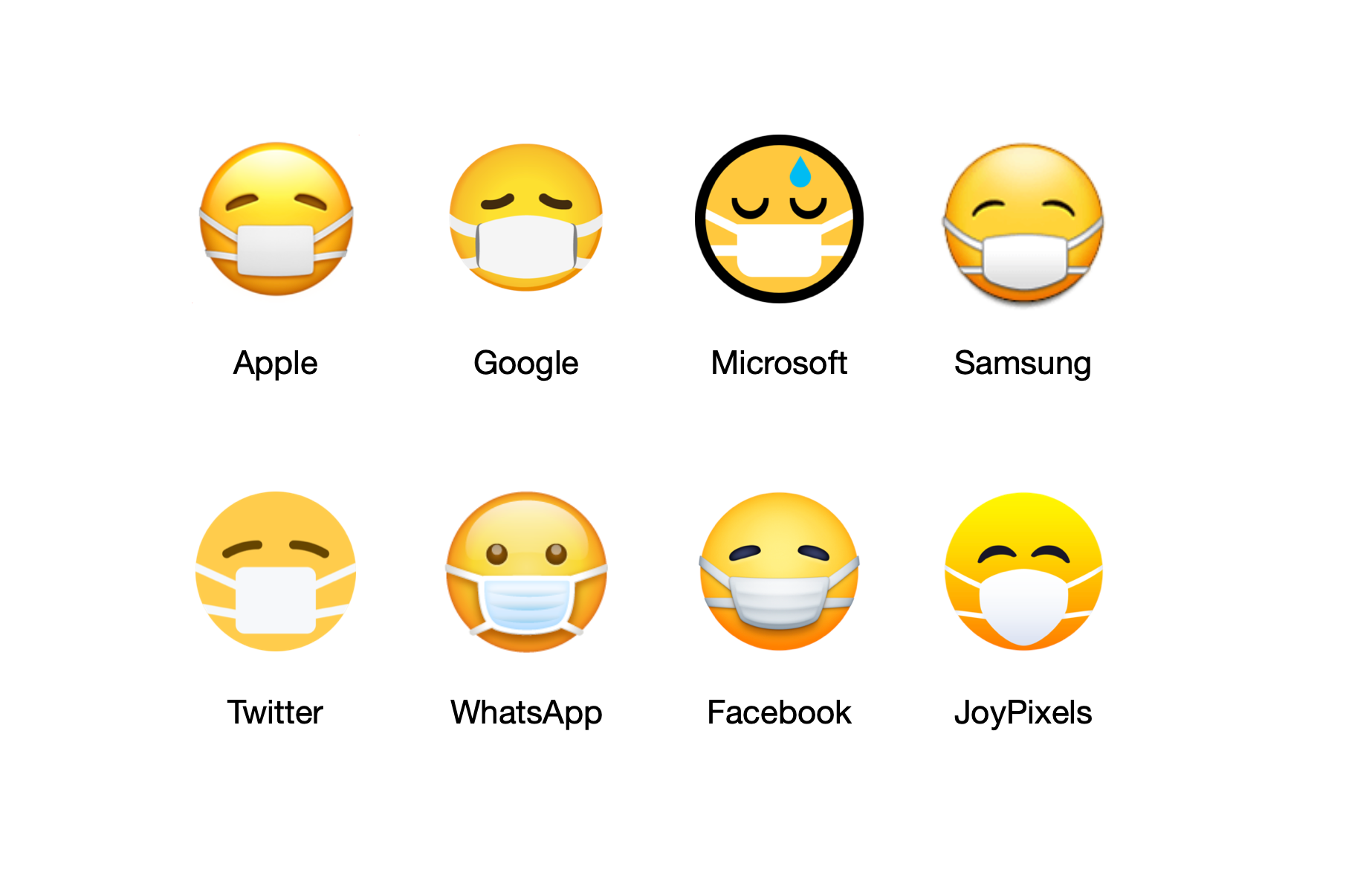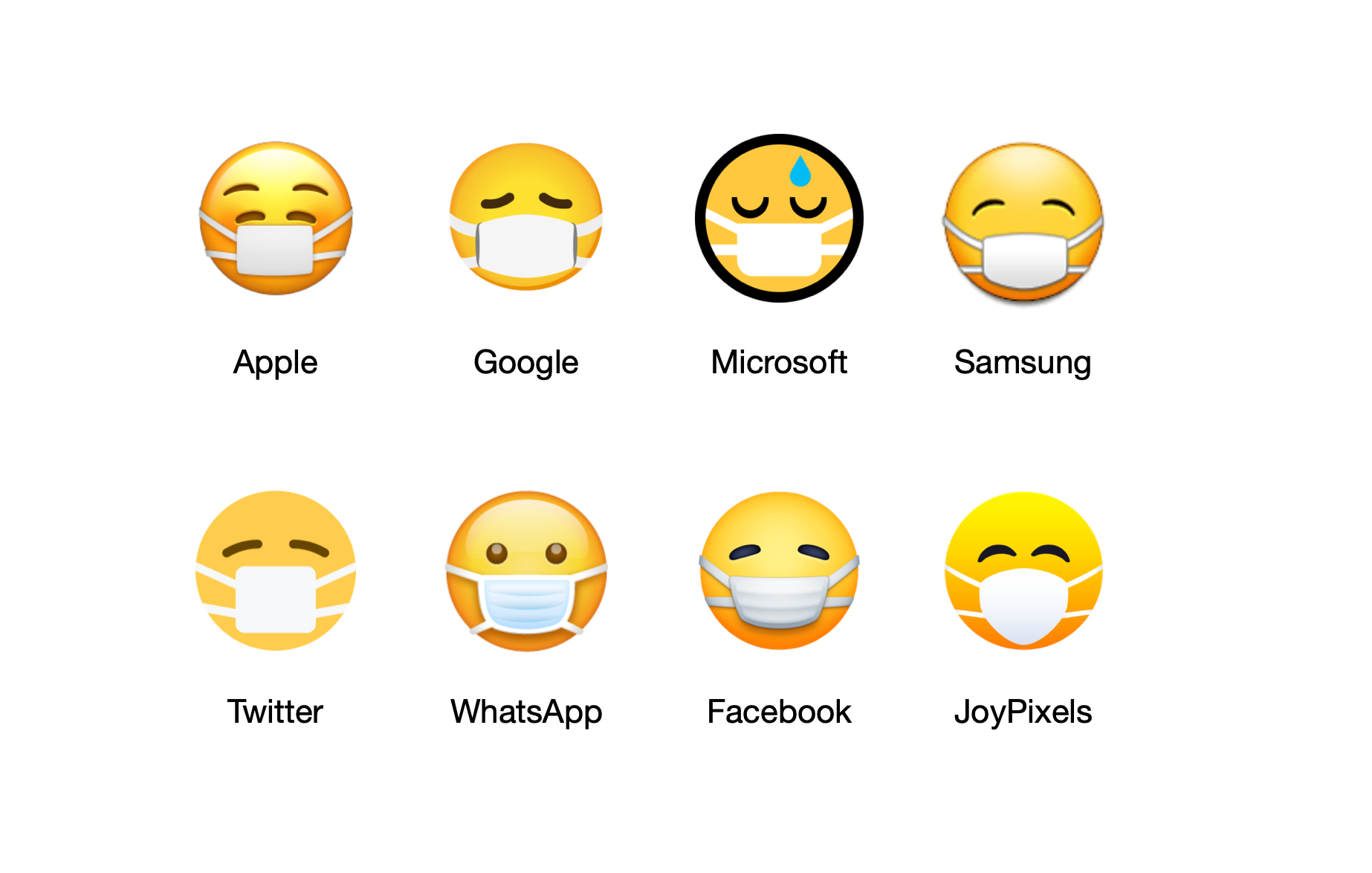Mask Wearing Emoji Now Smiles

Long used as an emoji to imply sickness, the mask-wearing emoji saw a revival in 2020 as one of the most popular emojis used in tweets about Coronavirus.
But why does it have to look so...sick? If mask-wearing is to become normalized and encouraged for people regardless of symptoms, then symbolism around mask-wearing shouldn't imply that by wearing a mask you must be sick. Or so the theory goes.

In the next release of Apple's iPhone operating system, this emoji no longer looks forlorn, and now appears to be smiling.
Replacing downturned eyes with eyebrows and blushing cheeks, it's fair to assume the new mask-wearing emoji is intended to be smiling.

In fact, a direct comparison with Apple's existing ☺️ Smiling Face emoji reveals that's exactly what's behind the mask. The eyes do tell a story.

Among other minor emoji changes buried in the beta release of iOS 14.2, this subtle change to 😷 Face with Medical Mask appears to carry the most weight, in the sense that mask wearing has become a somewhat political act in the United States.
It's a very 2020 emoji update.
Can Apple just do that?
This is only a beta release right now, but if the change remains in place by the final version of iOS 14.2, this does pose one question of compatibility.
The emoji name 😷 Face with Medical Mask doesn't suggest any particular emotion to go with this past, meaning that the design is mostly up to interpretation by vendors.
What this does mean is that a smiling mask-wearing emoji sent from iOS 14.2 will still appear sad or sick when recieved on an earlier version of iOS, or on other platforms.

Whether this change is considered problematic may depend on the context, but in no way can it compare to Apple's unilateral change of the pistol emoji in 2016.
Any change to the emotion of an emoji isn't ideal, as we always want to be clear in how we portray ourselves even in text-based emoji form. But it's hard to say the emoji is detailed enough that other context wouldn't clear up potential misunderstandings.

If anything, this is a sign of support from Apple on mask-wearing.
The question of if or how this affects people's use of this emoji is an unknown quantity at this stage.
Emoji History
The mask-wearing emoji dates back to Japanese phone carriers. The same way every one of the very original emojis began. Only later additions came from other sources.
The designs in Japan, like those used today, varied from company to company. They weren't necessarily ill, sick or sad, but certainly none appeared happy.
😷 Face with Medical Mask dates back to the original Japanese emoji sets, and was added to Unicode in 2010 https://t.co/Jz1OkuoAC9 https://t.co/zjMj1dgIst pic.twitter.com/fXe9vn1mCD
— Emojipedia (@Emojipedia) March 16, 2020
Apple was the first widespread implementer of color emoji outside Japan, and based most designs on ensuring compatibility with Japanese carrier Softbank.
Apple's original mask-wearing emoji of 2008 kept the same general appearance for the past 12 years, with only minor changes to increase resolution of the image.
😷 Face with Medical Mask was added to iPhone OS in 2008 https://t.co/ym2z0EZBd7 pic.twitter.com/AgloaYUB38
— Emojipedia (@Emojipedia) March 16, 2020
Other companies like Google and Samsung included a bead of sweat on their masked emojis, driving home the point that this emoji is sick.
😷 Face with Medical Mask was added to Android in 2012 https://t.co/GTMJSdJ7Gz pic.twitter.com/728CPFxV0U
— Emojipedia (@Emojipedia) March 16, 2020
😷 Face with Medical Mask was added to Samsung phones in 2013, and looked like (L) at the time and now looks like (R) https://t.co/ghcTD4GLNX pic.twitter.com/pRuZktZM6Z
— Emojipedia (@Emojipedia) March 16, 2020
A number of these designs changed over time, and today most platforms use a fairly consistent design where the only facial feature is closed or downward-facing eyes.
An exception has been WhatsApp which uses its own emoji designs on Android and the web. WhatsApp uses neutral eyes on this emoji, which might be the safest option of all. I'm not happy, nor sad about this mask. I just am.

In the past, companies have frequently updated emoji sets to more closely match Apple's designs. Sometimes outliers will move to match a design used by the most number of platforms.
Whether other platforms will make similar changes in future releases is yet to be seen. If this change stays in place for the final release of iOS 14.2, this is how the same emoji would be appearing on each platform:

When will I see this?
iOS 14.2 is currently in beta, with a public release coming in October or November 2020. No date for this has been set by Apple except 'Fall', though in past years Apple used on a late-October date for new emoji support.
As with all beta releases, designs are subject to change. See also the new emojis coming to iOS 14.2.
👀 New emojis in iOS 14.2 beta https://t.co/883idFLiJn pic.twitter.com/KMmATUf6NQ
— Emojipedia (@Emojipedia) September 29, 2020
